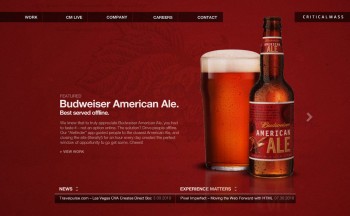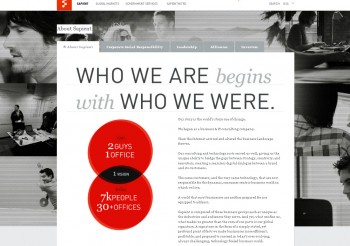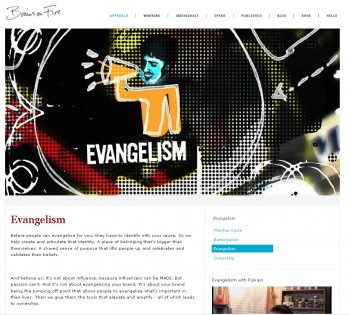(Updated in 2020)
10-POINT PLAN: 1.1 Articulate the Vision
Why Define the Vision?
Tom Peters says that a business either supports the over-achievers or the under-achievers. The ones who feel supported call up their friends to say “This is a great place to work!” The other group feels unappreciated and leaves. My experience has shown over and over again that this is true. A business reinforces gets the behaviors it reinforces through its models and processes.
Zappos is a great case study in a how to build a internal community of brand loyal fans. What makes the Zappos culture uniquely strong and attractive is the commitment they make to the core values of the community. The vision is articulated clearly and acted upon in highly visible ways.
“Everyone that’s hired, it doesn’t matter what position–you can be an accountant, lawyer, software developer–goes through the exact same training as our call center reps. It’s a four-week training program and then they’re actually on the phone for two weeks taking calls from customers. At the end of that first week of training we make an offer to the entire class that we’ll pay you for the time you’ve already spent training plus a bonus of $2,000 to quit and leave the company right now.” — Tony Hsieh, CEO Zappos, as interviewed in Fast Company, The Happiness Culture …
They pay new employees to leave!
It’s Not How Or What … It’s Why That’s Important
Zappos says that it’s not a company it’s a mission — the Happiness Culture. That says something about who they are and why they do what they’re doing. Read the the core values of the Zappos culture.
The Zappos Core Values are:
- Deliver Wow Through Service
- Embrace and Drive Change
- Create Fun and a Little Weirdness
- Be Adventurous, Creative and Open-Minded
- Pursue Growth and Learning
- Build Open and Honest Relationships with Communication
- Build a Positive Team and Family Spirit
- Do More with Less
- Be Passionate and Determined
- Be Humble
They explain why people work there, why people do business there, and why people talk and write about them.
Tony Hsieh has articulated, built, and protects the community values that make Zappos a great place to work and a great company to work with. No wonder Zappos has such a huge and love-them loyal fan base.
That vision built a company in an enviable position. There is Zappos! and the companies who wish they had what Zappos does.
It’s Not the What or How, It’s the HUGE WHY Behind It
Leaders know where they’re going — direction and vision. They know how they will get there — a strategy and tactics. Leaders who are community builders articulate that direction and strategy with intelligence and resolve, with clarity and passion, and through a generous invitation for collaboration.
At the core of community building are three key understandings:
- A community-building business offers financial, professional, and philosophical/political growth for the community. As we invest our time and resources, a thriving community and its members become more successful at earning income / revenue, gain more visibility and professional authority within their industry, and know that their work has meaning and contributes to a higher purpose.
- A community-building business looks to align goals rather than trade services. Communities collaborate and communicate to raise a barn. Gone are the hierarchies and silos that used to negotiate to build a coliseum. The difference is in shared ownership of ideas, interactive problem solving, and commitment to the vision. Invest in people and they will return the investment.
- A community-building business knows that the people doing the work know what’s working and what isn’t. The exact interpretation of how the HUGE WHY vision is put into action is defined at the team level. Teams discuss and design simple decision models based on the agreed upon core values. As a result, people at every level know how to respond to new situations with positive action.
The vision of where a community-building business is gone draws from those three understandings. It’s good to know them, but it’s not enough.
5 Reasons You Absolutely MUST Articulate Your Vision
It’s critical to put the three key understanding of community building into action by defining and sharing a distinct vision. The vision sets the value of the business and the higher purpose that attracts and unites the community. It defines the internal brand and affects everything from hiring decisions to how employees treat customers.
Here are 5 reasons you absolutely must share your vision early and as often as you can:
- To make the thinking concrete and achievable. We all know things better when we have to communicate them. By articulating our vision, we internalize our commitment, begin to know it, and see the reality and flaws our thinking.
- To fulfill your leadership responsibility. It’s the role and responsibility of the community leader to define the reality of the community. The vision is and will be what attracts and retains the best employees, vendors, partners, and customers as part of the community.
- To visibly underscore the community values. Once the vision is articulated, the core values of the community can be listed, illustrated, discussed and integrated into every part of the business.
- To unify the community around one well-defined vision. Without a well-articulated vision, each community manager and member will be forced to make his or her own definition of what the community stands for and how those values are best incorporated into decision making.
- To empower and protect the community. In the same way that a budget or a schedule allows people to make decisions with confidence, the definition of the vision allows people to make decisions. A strong vision statement lends confidence to people who want to do the right things for the business.
A loyal internal community is a huge advantage. Every employee becomes a brand ambassador who invests emotionally in building the community as well as the company. Even in a solo practice, not to set your vision is to leave yourself in a place where your idea of where you’re is open to redefinition and loss of focus far too easily.
The strongest businesses know where they’re going and can share that with confidence and clarity. Yet too often we assume that folks understand the importance of where we’re going and why we’re going there. We have to share our vision or folks won’t see it and believe it’s going to happen.
Have you set the vision for your business? Is it HUGE enough to include everyone who helps your business thrive?
Related
To follow the entire series: Inside-Out Thinking to Building a Solid Business, see the Successful Series Page.
–ME “Liz” Strauss













